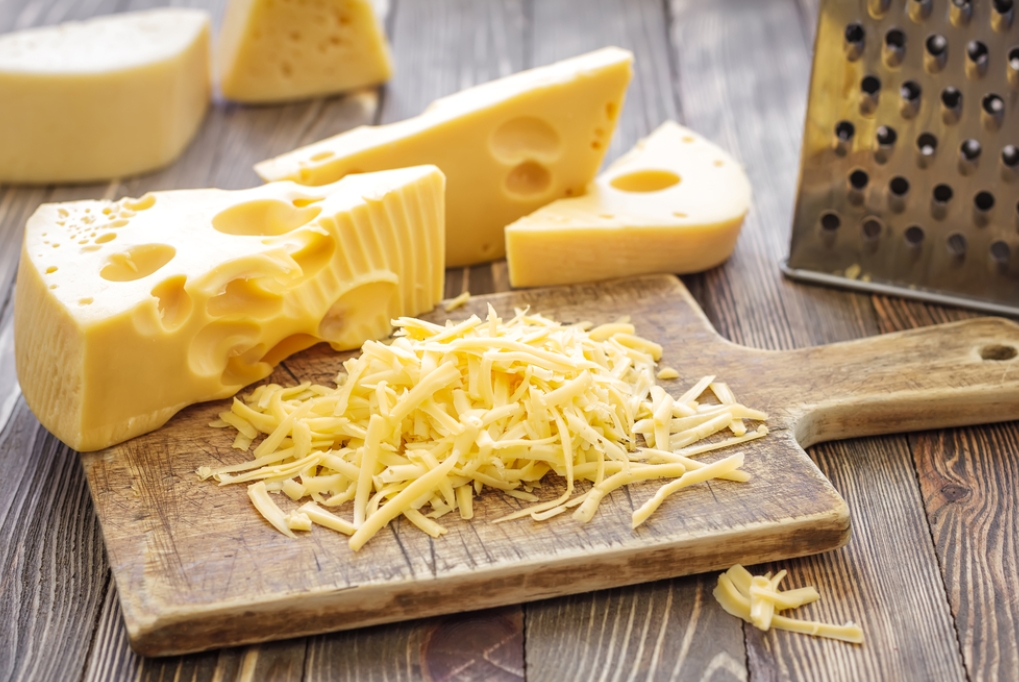What If We Were Born Without Hands? 5 Thoughts to Ponder
How much thought does feeding a baby require? How are wings suited to different birds? Can one make cheese from impure milk? And what fictional tale are scientists telling us?
 (Photo: shutterstock)
(Photo: shutterstock)How Much Formula Does a Baby Need?
Breast milk is the best food for a baby. However, there are situations where a mother chooses not to breastfeed, or she is unable to do so. The solution is infant formula products such as Materna, Similac, and others.
Every new parent knows that incorrect preparation of baby formula can cause digestive problems for the infant. Therefore, many questions arise on this topic that can create much confusion for parents:
How much should the baby eat? How do you know if he's hungry? How do you know he's had enough? Do you need to use mineral water for preparation? Do you have to heat the bottle? How many times a day should a baby eat, and how many milliliters each time? How do you clean the bottle? How do you know if the formula suits the baby? And many more questions...
A complex issue is the question - how much powder to put in the bottle? This is because there are many parameters to consider: the amount of milk substitute the baby needs depends on his age and weight. The needs and appetite vary from baby to baby, and most babies change from day to day and month to month.
The desired powder quantities by age and the baby's weight are noted on the back of the formula package: for example, in the first months, during the first month, they give 60 ml, in the second month - 120 ml. And how do you measure the amount of powder to put in the bottle? There is a measuring spoon in the package, a spoon without which every parent is lost!
We see that there are essential questions and much logistics involved in feeding a baby.
So, during those 9 months the baby was in his mother's womb, who was there to warm the food for him? Who approached the fetus and fed him every time he was hungry? Who gave him the appropriate amount of food every time? Who measured 60 ml for him with a spoon, and which measuring spoon was used? Who "burped" him after eating?
"Creeping Creatures and Winged Birds Praise Hashem"
A cursory glance might suggest that all birds have the same wing structures, but notice, in bird species capable of flying, the shape and size of the wing differ among various species according to their flight style:
Species that need aerodynamics for relatively short distances, such as capturing prey or evading predators, have round and broad wings. This wing type enables good steering ability and high speed, mainly found in species living in relatively forested areas, like the jay, woodpecker, and hawk. In contrast, species that spend much time in the air, like the swallow and albatross, have long, narrow wings with pointed tips. This wing type allows for fast flight without creating drag, which slows speed and requires more energy for flying.
Large species, such as eagles and pelicans, fly passively through gliding, due to a very high wing load (wing area divided by body weight). These species require long, broad wings that enable them to remain in the air for a relatively long time.
 (Photo: shutterstock)
(Photo: shutterstock)In attempting to understand how birds fly, one must recognize many physical principles (speed, pressure, air density and temperature at each point around the body at all times, a speedometer, etc.), and the amazing anatomy of a bird's body that allows this (lightweight hollow bones, feathered wings, their unique structure that "cuts" the air, and more).
The deeper the dive into the wonderful wisdom embedded in creation and the incredible capabilities endowed in animals at their creation, the more we understand that there is a mighty force that created the animals and instilled these laws within them...
Sticks at the Sides of the Body
A baby is born – and he has hands. Anyone who observes will see a wonder that, unfortunately, we have become accustomed to:
You see a body, from whose sides emerge two strange "sticks"... Each "stick" splits into five more "little sticks" at its end, with each of the five divided into its own segments, allowing for numerous movement possibilities.
This is not to be taken for granted! Think about what would happen if a person were created without hands? It would be very difficult to function, wouldn't it? How would a person bring food to his mouth? How would he organize what he needs around him? With what?
And what if we didn't have an elbow? Meaning, if we had one long, continuous bone without the ability to bend it. Our body would look strange: a body with such "large forks" hanging from its sides... Would we be able to bring food to our mouth? Drink from a cup? Bathe, dress, and many other essential activities?
Here we see the wonderful design in the human body. And we haven't yet talked about the amazing symmetry, the connection of the hand to the shoulder, which has a wide range of motion allowing a large maneuvering space for the hands, about the hand movements that serve as an important means of interpersonal communication, and much more.
Only a being of supreme intelligence, with unlimited capability, could be the creator of something so sophisticated!
What Is Cheese Made Of?
Cheesemaking is the process through which cheese is created from milk. It turns out that the process of milk coagulation is a distinguishing sign between pure and impure animals; according to this criterion, only the milk of pure animals coagulates while that of impure animals does not. Let me explain:
The Gemara in the tractate Avodah Zarah (35) states: "Pure milk stands (hardens and becomes cheese). Impure milk does not stand." These words reveal to us a natural law that applies to all animals in the world: only from the milk of a pure and kosher animal (which chews its cud and has split hooves) can cheese be naturally produced. But the milk of an impure animal – missing even one sign of purity, that is, not chewing cud or not having split hooves – does not coagulate!
 (Photo: shutterstock)
(Photo: shutterstock)Friends, this commitment stands the test! Because if a situation is found in the world where the milk of a pure animal does not coagulate, or the milk of an impure animal does coagulate, it would be a fatal error that would seemingly refute the truth of the Torah, for we know that Hashem does not err! The "author of the Torah," who made this claim, must know all types of animals and beasts in the world, know the anatomical structure of all animals and beasts, and make such a commitment for generations!
It is needless to say that until today, everyone who investigated and researched the subject of milk among pure and impure animals witnessed the truth of the rule we received in the Oral Torah. The test results showed cheese formation in the milk of cow, goat, sheep, buffalo, ibex, European roe deer, and red deer. All these are pure animals. In contrast, cheese did not form from the milk of mammals that are impure animals: mare, sow, alpaca, rabbit, monkey, bitch, she-camel, or human milk.
The research results once again proved to anyone who was still in doubt, the absolute reliability of the scientific information possessed by the sages as received in the Creator's Torah. Is there anyone who could have known this confidently, except the Creator of the world? He who committed to such a statement - is he not the one who created all animals and beasts... every creator knows his creation, no?
A Fictional Tale
Anyone with a sound mind realizes that any talk of "random development," even over the course of infinite years and even when wrapped in a nice-sounding academic term like "evolution," appears to the wise observer only as a fictional tale.
The so-called learned explanations, delivered with a serious and authoritative demeanor, about "survival of the fittest" and "extinction of the unfit," cannot explain the beginning of the emergence of life or the meaning of the wonderful development of each of the incredible body systems, and certainly not the sophisticated combination of all of them together in such a small body.
It is clear, then, that there is a Supreme Force, with tremendous wisdom and power, who planned and created all this. He is certainly not a human, for man does not possess such wisdom and powers. Who is he, then?

